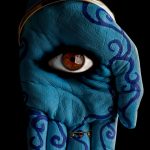What are Pagans?
Pagans are those people who chose not to follow an established religion or religions, but those who follow a polytheistic or pantheistic religion that worships nature. In the earliest years of Christianity, paganism was a term used to describe the people of the Roman Empire that practiced polytheism. It is a word that has been broadly used as derogatory, with paganism often viewed as ‘the religion of peasantry’ implying that those who followed it were too stupid and uneducated to understand the higher ideals of the Church.
What is Paganism?

Modern paganism has also taken on changes in ritual, festival and incorporates magic and witchcraft. Many pagan groups feel that their ritual should be full of joy and abandonment, not something serious and somber. Since neopaganism is focused more on the discovery of the self and other enlightenment ideals, much of the more serious and unpleasant forms of ritual, such as animal sacrifices, have been abandoned. Magic and witchcraft are other areas where neopaganism has seemed to create it’s own definitions. Many neopagans prefer to follow the ideas of Aleister Crowley who declared that magic is directly tied to the will and desire of the user.
What practices are involved?
Magic practices are divided into two types when used in ceremony: thaumaturgical or theurgical elements. Thaumaturgical practices are those centered around actively solving a problem or achieving a goal while theurgical practices is dedicated more to foster a level of intimacy with a deity. Both forms of magic have a place in ritual, festival and personal applications for each of the different pagan religions.
The most popular pagan religions are:
Wicca: Wicca is the most widely known pagan religion and has the greatest number of practitioners. It includes rituals, magic and the celebration of Sabbats.
Druidism: Druidism also has a long, large following and has been around since the Iron Age when it was practiced by the Celts of old. They have their own rites and celebrations that they practice.
Heathenry: Heathenry is a reconstruction of the Nordic and Germanic paganism and includes ancestor worship and feasting.
Hellenism: Just as it sounds, Hellenism is a modern reconstruction of the ancient Greek religions of the Hellenistic period including the worship of the Twelve Olympian Greek gods, and those who practice it will engage in ceremonies, feasts and offerings to and for these gods.
Kemetism: This religion is based on the beliefs and practices of the ancient Egyptians and over the years has evolved and includes other components from other African religions.











